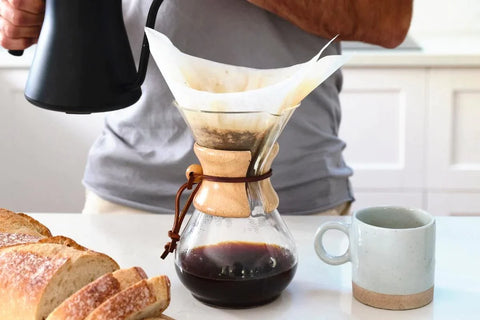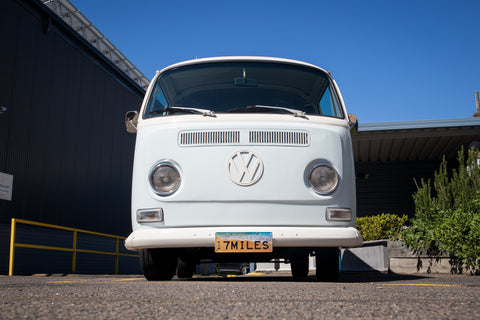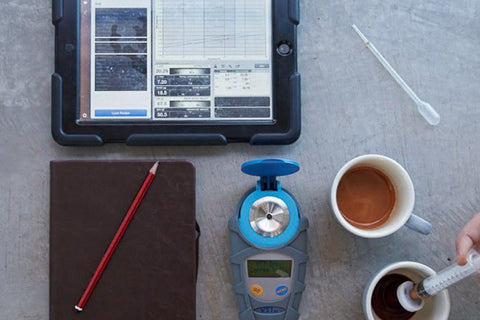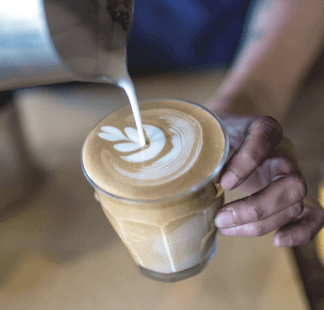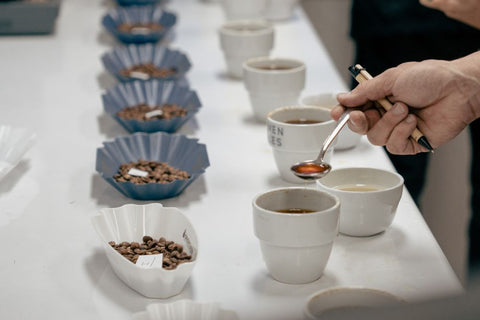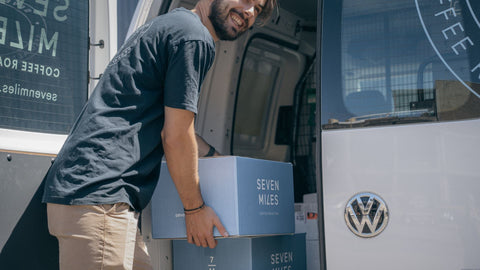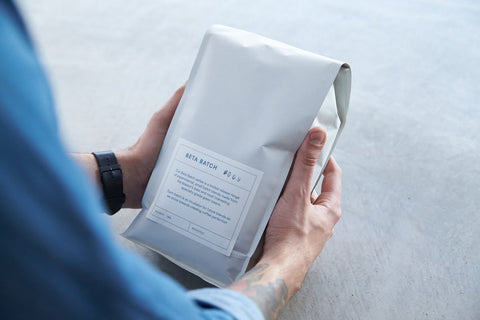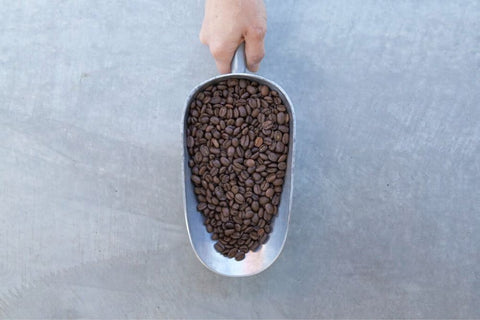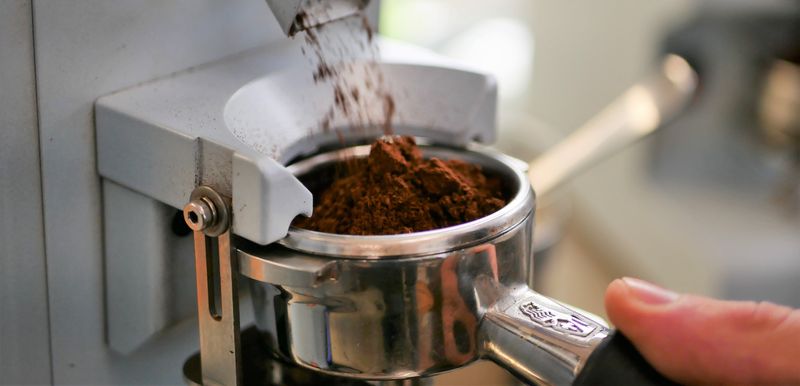Now that you’ve selected your ideal commercial espresso machine, it’s time to decide on its perfect counterpart. The grinder you choose will have a big impact on both the flavour of the coffee and your workflow behind the bar, so it’s important to know what you’re getting.
Historically, there have been two main types of commercial espresso grinders – on demand & pre-ground. As their names suggest, ‘on-demand’ models grind each shot directly into the portafilter, while ‘pre-ground’ models grind & store ground coffee in a dosing chamber ready to be dispensed. Fresh is best, so we’re only going to focus on ‘on-demand’ models in this guide.
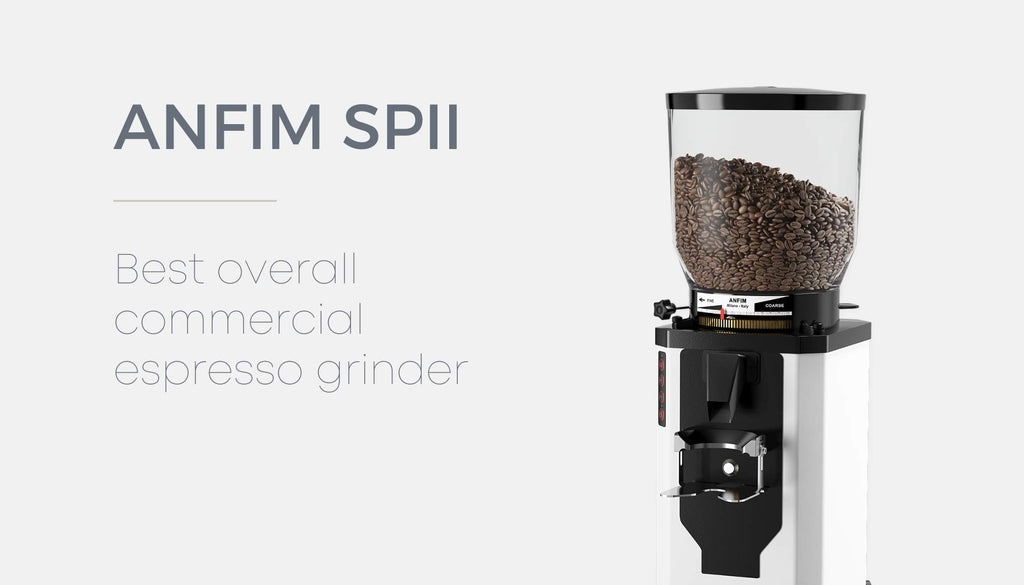
1. Anfim SPII
Best all-round commercial espresso grinder
This grinder is a great choice for high volume & specialty cafes. It has minimal grind retention and two cooling fans, which gives it good thermal stability at higher volumes. Also, in our recent tests the Anfim SP2 produced remarkably consistent dosing, which is critical to maintaining consistently tasty espresso. It’s not the cheapest grinder on the market, but it’s our pick for espresso bars & cafes who need quality, consistency & reliability.
Price: around $3300 (AUD)
| PROS | CONS |
|---|---|
| Consistent dosing | Slightly noisy |
| Fast grinding | Requires regular cleaning |
| Precise adjustments | Microswitch slightly fragile |
| Hands-free cradle |
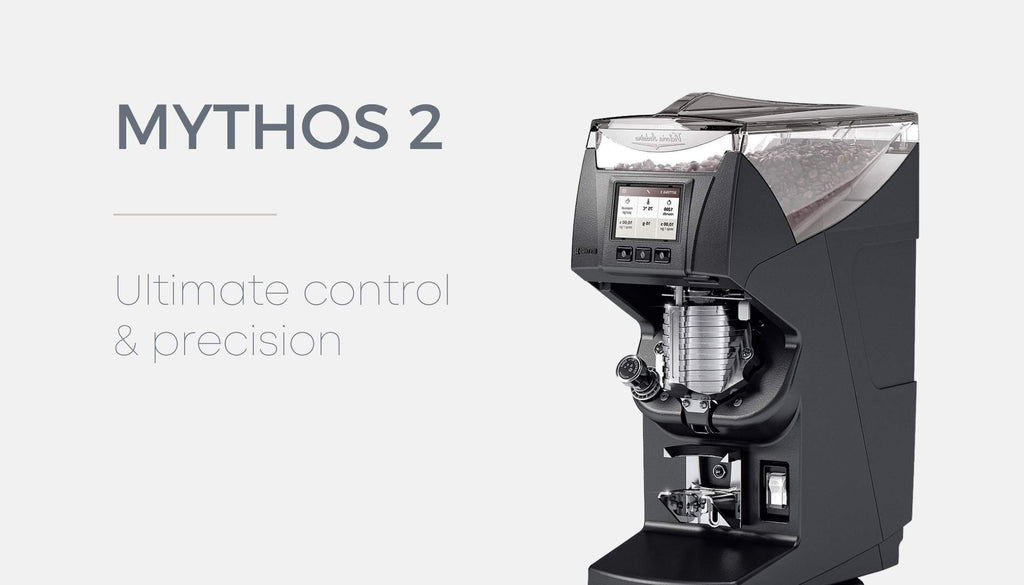
2. Mythos Two
Ultimate control & precision
When the Mythos 2 came along in 2018, the talk was all about the new ‘gravimetric’ (grind by weight) dosing system. The previous model, the Mythos One, along with pretty much every other grinder on the market, used a digital timer to control the dose of coffee. Grinding by weight has one big benefit – accuracy. Set the amount of coffee you want, and that’s what you get.
A downside is that it is a little slower than a timer-based grinder as the scales need to ‘tare’ (zero) after you insert the handle. The Mythos 2 also provides control over how fast the burrs spin (RPM), which allows you to adjust this for taste. It’s a pretty niche function, but some baristas will appreciate the extra level of control this gives.
There have been some notable improvements when compared with the Mythos One – a big one being the clump crusher, which is much easier to service. For me, the Mythos Two is best suited for specialty cafes that value consistency from shot to shot, even at high volume.
Price: around $4800 (AUD) for the ‘gravimetric’ model
| PROS | CONS |
|---|---|
| Precise dosing | Long dosing time |
| Adjustable motor speed | Cradle not universal |
| Easy to service | Expensive |

3. Mazzer Robur S Electronic
A new spin on an old classic
Wind the clock back to 2010 and the previous generation Robur E was the undisputed king of espresso bars. It was powerful, huge & incredibly fast. However, it had one big problem: consistency, or rather a lack of it. With this new ‘S’ model, Mazzer have really come to the party.
It maintains the iconic Robur appearance, quick grinding and conical burrs whilst adding in a bunch of new features like electronic dose adjustment, adjustable portafilter holder, easy clean grind chamber and grind pause function. Most importantly, Mazzer have managed to improve the consistency from shot to shot, although it's still not quite in the league of the Anfim or Mythos 2 in this department.
They’ve also managed to reduce the coffee ground retention by 52%, which helps fix a common complaint with the previous model Suitable for cafes doing high volume who are looking for a familiar name that’s been around the block.
Price: around $3800 (AUD)
| PROS | CONS |
|---|---|
| Fast grind time | Dose Consistency |
| Hands-free grinding | Touchpad slightly complicated |
| Very easy to clean & service |
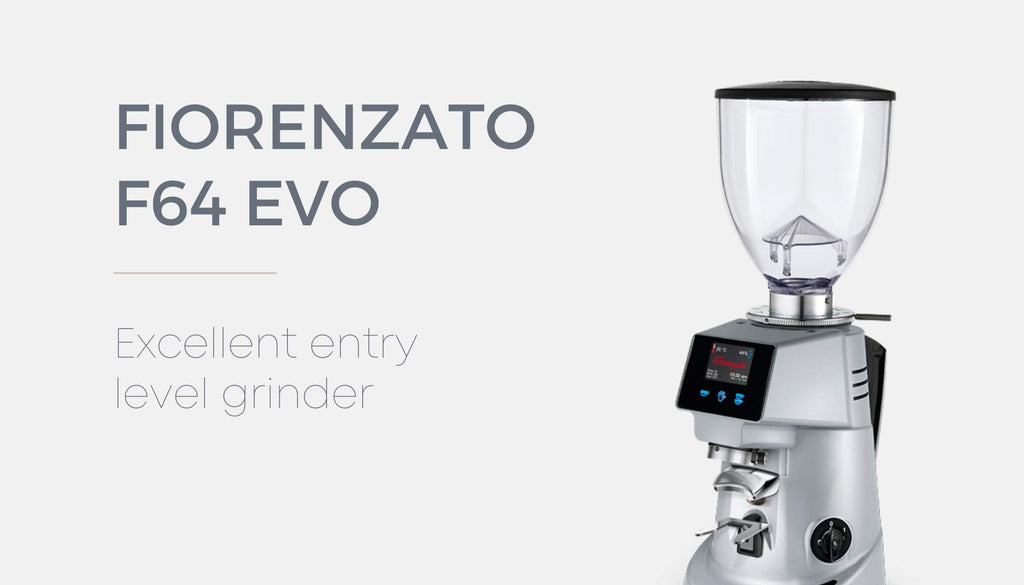
4. Fiorenzato F64 EVO
Excellent entry level grinder
This grinder is perfect for cafes & restaurants that want a quality, grind on demand option. It is a sturdy, reliable grinder for the price and comes in multiple colours. While it’s not up there with the other grinders on this list in terms of speed or accuracy (hey, it’s a tough list), it is still a very capable grinder that would be for businesses that serve low-medium volumes of coffee, or as a second grinder in busier espresso bars.
Price: around $1900 (AUD)
| PROS | CONS |
|---|---|
| Easy Programming | Short lifespan on burrs |
| Low Service Requirements | (premium 'redspeed' burrs available as an upgrade) |
| Few moving parts |
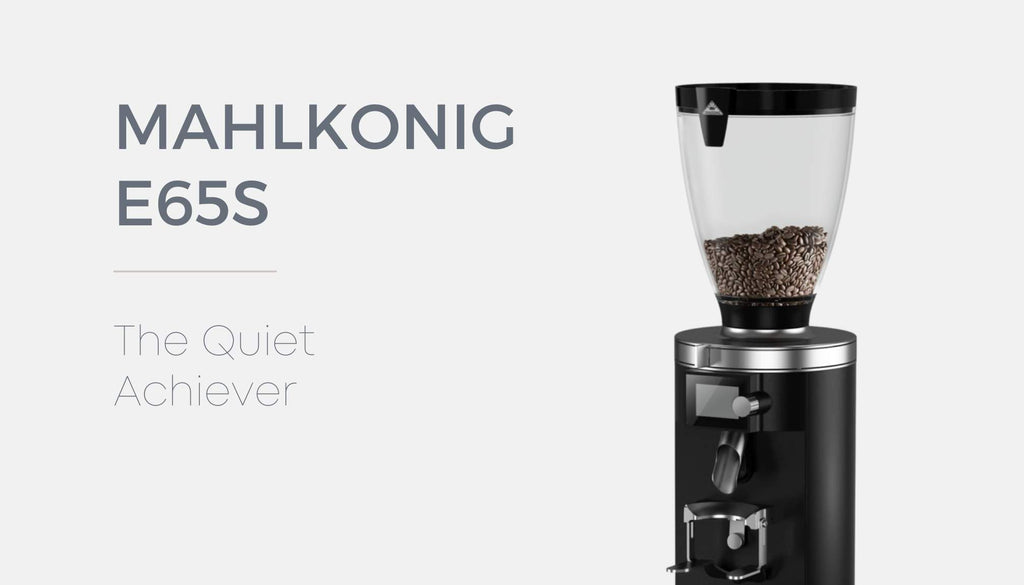
5. Mahlkonig E65S
The quiet achiever
New to the Mahlkonig family, this grinder is suitable for medium volume cafes. It is easy to service, and it grinds quickly, quietly and it produces beautifully clump-free grounds. This timer-based model looks likely to be overshadowed when the new E65S GbW (grind-by-weight) version arrives this year.
From our initial impressions, this looks likely to be a very impressive and accurate model.
Price: around $3000 (AUD)
| PROS | CONS |
|---|---|
| Fast, Quiet Grinding | Short Lifespan of Burrs |
| Easy Grind Adjustment Dial | Not overly stylish |
| Adjustable cradle |
What to look for in commercial espresso grinder
1. Capacity
The volume of coffee that you will be grinding per hour is usually the biggest factor to consider when choosing a grinder. A grinder that’s not designed to handle the volume is often the weak link in a busy coffee shop. It’s not just the overall volume either, the fluctuations between peak & quieter periods are also a factor.
In busy espresso bars, the grinder needs to be able to quickly adjust from 200 coffees per hour to 20 coffees per hour without affecting the flavour or the extraction of the coffee. The dominant force here is heat, specifically how hot the grinding blades get and how quickly the grinder can bring it back to a stable temperature.
2. Blade (Burr) type
When it comes to coffee grinders, there really are two types: conical & flat. The name refers to the physical shape of the blades (or burrs as they’re also known), there are also “hybrids”, but we won’t get into those here. A Conical grinder has two distinct blades, a cone & cup that slot into each other whereas flat blade grinders, as the name suggests have two near-identical flat discs that face each other.
Both types work much the same, whole beans fall into the void in the middle of the flat disc or cup & get pushed out through the blade teeth into another chamber or directly into the portafilter. What determines consistency at this point is the difference in height between the “peaks & valleys” of the blade teeth, how many large particles there are, how many small particles there are and everything in between, we call this particle size distribution and plays a huge role in the consistency from shot to shot.
3. Workflow
To be able to deliver the best possible customer experience, you want to spend as little time as you can with your head down, and more time interacting with customers, while getting their coffee out to them nice and quickly. The introduction of hands-free grinding was a big game changer for workflow.
A few years ago, most grinders on the market required the barista to hold the group handle against the cradle while the coffee was being ground/dosed into the basket, which meant that they were not able to complete any other tasks for the 5-10 seconds they were dosing. These days, more and more grinders are available with hand-free grinding – the group handle is held in place by a small lip on the cradle and when inserted, it pushes an activation switch which starts the grinder.
This means the barista can start prepping the next coffee while the first coffee is grinding – huge time saver.
4. Consistency
Grinder consistency is another aspect which will impact your speed of service, ease of workflow and overall consistency of flavour from coffee to coffee.
If repeated flavour is something that’s important to you, you want to be looking for a grinder that will dose the same amount of coffee shot after shot so you don’t need to weigh each one after grinding. Finding a grinder that can do this consistently as well as quickly is the trick! Grind time can range from 5-15 seconds depending on which grinder you are using, generally speaking, faster grinders will have larger inconsistencies when it comes to dosing but are more consistent with temperature, while the opposite can be generally be said for slower grinders.
Our Coffee Next team go into more detail on comparing the accuracy & consistency of grinders in this article.
5. Reliability & Servicing
Servicing is a factor that needs to be considered when selecting a grinder as this will determine how long you are out of action when trouble comes along. You can get your hands on grinders that are a little cheaper, but keep in mind that a coffee grinder is like any other appliance, which means parts will fail and blades will wear out, so accessibility of parts and service is crucial to keep your business running.
All the above-mentioned grinders have local suppliers and service providers in Australia and parts can be easily sourced, so if the grinder breaks down, you can get back up and running in no time. Having said that, for a busy coffee shop or espresso bar, the best defence is often to simply have a spare grinder. This allows you to keep selling coffee while a technician works on the problem.
Our recommendations
All the above grinders are capable of making great tasting coffee. Bigger isn’t always better, so choose a grinder that best fits your café scenario so that it is the best tool for the job.
There’s no need to invest in a high capacity grinder if you are only making a few coffees per hour, meanwhile if you are a high-volume café, be sure to get yourself a grinder that can keep up with the demand.
Check out our guide to the best commercial espresso machines, or take a look at our wholesale coffee supply options for cafes, espresso bars & restaurants in Australia.
